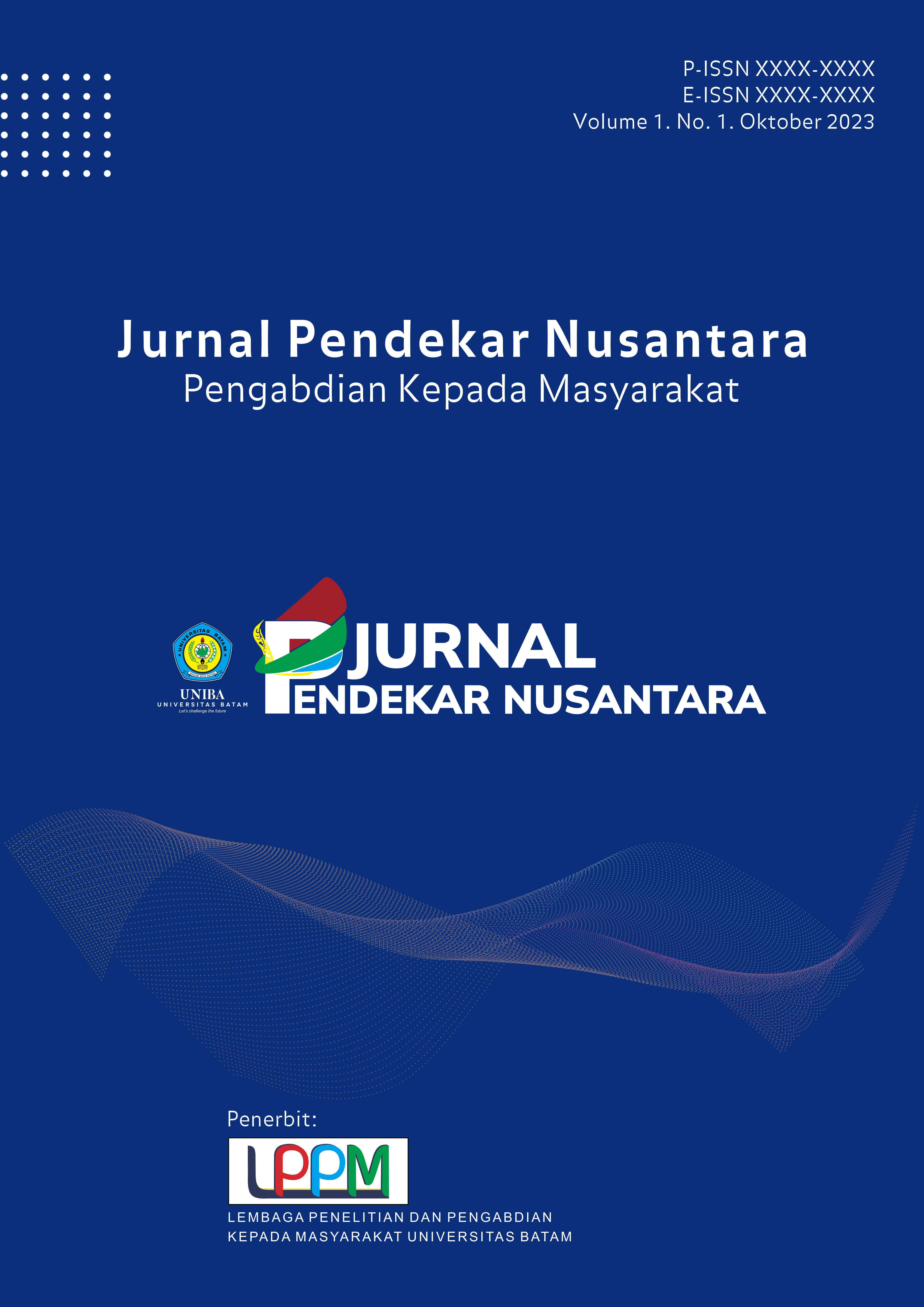TATA KELOLA FASILITAS UMUM DI LINGKUNGAN PERUMAHAN SEBAGAI RUANG INTERAKSI PUBLIK DAN RUANG TERBUKA HIJAU
DOI:
https://doi.org/10.37776/pend.v1i1.1222Keywords:
public spaces, open spaces, residential, green open spaces, public interaction spacesAbstract
Changes in people's lifestyles have led to an increasing demand for a comfortable residential environment. This includes the availability of open space that is able to become a space for interaction between residents in a residential environment. In line with that, the need for green open space is also felt necessary to create a more natural and healthy living environment. In the residential environment of RT.003 / RW.034 Kel.Belian, the availability of open space or public facilities (fasum) has not been managed in an integrated manner. Each fasum area is only in the form of empty land, pavilion area or field that does not have a clear allocation of use so that it cannot provide maximum benefits for the residents of the housing complex. Mentoring activities are carried out in formulating the management of public facilities so that they can function as community interaction spaces and green open spaces. The mentoring method is carried out by means of interviews, discussions, observations and social participation (Participatory Action Research/PAR) in which the proposer is part of the action, does not separate himself and melts into the situation of the community being assisted and works with residents in carrying out formulating the management of existing fasum land. This aims to empower the potential of the community and maintain the character of mutual cooperation between residents. As a result of the mentoring process, a new fasum management was formulated in which one fasum was designated as a green open space, one fasum that already had a pavilion was rejuvenated and built sports facilities and one fasum was used as a jogging track area and children's playground.References
Bakhri, S. (2020). mplementasi Penyediaan Fasilitas Umum Fasislitas Sosial Dalam Rangka Pembangunan Perumahan Di Kawasan Pemukiman. Mplementasi Penyediaan Fasilitas Umum Fasislitas Sosial Dalam Rangka Pembangunan Perumahan Di Kawasan Pemukiman, 8(1), 80–88. https://uit.e-journal.id/JPetitum
Darmawan, S., & Utami, T. B. (2018). Pola Pemanfaatan Ruang Terbuka Pada Pemukiman Kampung Kota. Vitruvian: Jurnal Arsitektur, Bangunan, Dan Lingkungan, 7(3), 127–136. https://www.neliti.com/publications/265313/
Fitri, A., Invanni, I., & Amal. (2020). The Level of Needs Green Open Space. La Geografia, 18(2), 90–98.
PP RI No. 12 Tahun. (2021). 185 Huruf. 086436.
Suciyani, W. O. (2018). Analisis Potensi Pemanfaatan Ruang Terbuka Hijau (Rth) Kampus Di Politeknik Negeri Bandung. Jurnal Planologi, 15(1), 17. https://doi.org/10.30659/jpsa.v15i1.2742
Ujianto, B. T., Afdholy, A. R., & Iqbal, M. N. M. (2022). PERUMAHAN Studi Kasus : Kavling Sidomakmur Baru , Kabupaten Malang. 191–196.
Winandari, M. I. R. (2018). TANGERANG The Use of Space and Open Space Management in Tangerang Estates. Prosiding Seminar Kota Layak Huni, 220–226. https://trijurnal.lemlit.trisakti.ac.id/lslivas/article/view/2765
Downloads
Published
How to Cite
Issue
Section
License
Copyright (c) 2023 Herlina Suciati; Fauzan Fauzan, Januarto Januarto, Yelna Yuristiary; Akhbar Ilmiah Room

This work is licensed under a Creative Commons Attribution 4.0 International License.









